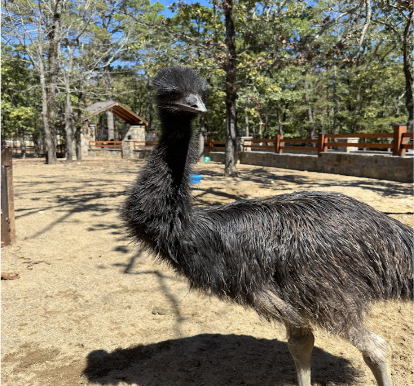Meet the Emu
The Emu (Dromaius novaehollandiae) is the second-largest living bird by height, surpassed only by its ratite relative, the ostrich. Endemic to Australia, the emu is the country’s largest native bird and a true icon of the Outback. These flightless birds make up for their lack of flight with incredible speed and endurance, capable of running up to 30 mph (50 km/h) using their powerful legs. Emus are also strong swimmers and can travel long distances in search of food and water. Their diet mainly consists of plants, seeds, and insects, making them important for seed dispersal in their ecosystems. Unlike most birds, male emus take on the role of incubating the eggs and raising the chicks, fiercely protecting them from predators. With their shaggy brown feathers, long necks, and curious nature, emus are a fascinating example of Australia’s unique wildlife.
Park Location: Animal Walkabout
About the Emu
| Conservation Status | Least Concern |
| Height | 59 – 75 Inches (150 – 190 cm) |
| Length | 58 – 62 Inches (148 – 157 cm) |
| Weight | 40 – 132 lbs (18 – 60 kg) |
| Diet | Diet in the wild consists mostly of fruit, seeds, broad leaved plants, shoots, flowers and insects such as grubs and beetles. |
| Incubation Period | The incubation period for emus is 56 days |
| Life Span | 5 – 20 Years |
| Top Speed | 31 mph (49 km/h) |
| Threats | The main threats to Emus are habitat loss and fragmentation , vehicle collision and deliberate slaughter. |



